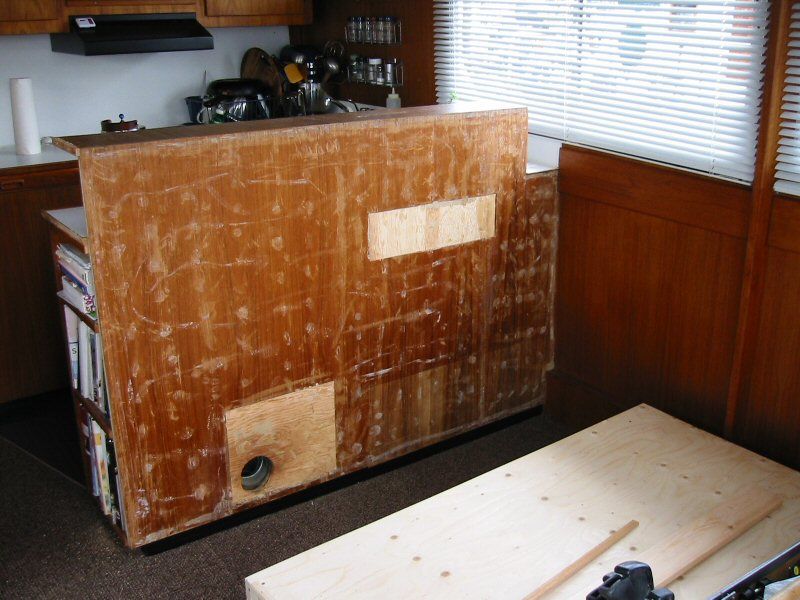What Equipment is Needed to Switch to Face-Frame Construction?
A cabinetmaker who usually builds frameless asks about the tools he'll need to add face-frame cabs to his product mix. February 26, 2007
Question
I make frameless and would like to learn to build face frame for a market that I am moving into. Is there a good reference for face frame cabinet construction? For tooling I have a slider, 13" planer, edgebander, pocket hole machine, line boring machine, portable table saw for installs, a couple miter saws and all the finishing gear, hand tools, drills, etc. Would you recommend anything additional to make face frame cabs, such as a wide belt to clean up the frames? A jointer?
Forum Responses
(Cabinetmaking Forum)
From contributor X:
I'm going to assume that face frame cabinets will be made once in a while and not a huge amount. A horizontal boring machine. A shaper or jointer to clean edges. If you get bigger into production, I'd think of a gang rip and a moulder or I'd purchase my material precut in width. And then your widebelt. It all depends on how many you will be doing. Face frame cabinets have many selling points regarding sales. Your planer can sub as your jointer/shaper. And you can hand dowel for a few jobs.
From contributor R:
1. Jointer - I don't see how a planer can double as a jointer. If a board is really bowed, I straighten it on my slider and then joint it.
2. Face frame table - really fast, keeps your joints tight.
3. Horizontal boring machine - I consider more important for frameless, but it would be very helpful for face frame as well, though not top priority.
From contributor D:
I'd definitely consider a jointer to help you get straight sticks for your frames. If a wide belt is in your budget, I'd get one. They save lots of time on all solid wood preparation. If you've got a good pocket hole machine, all you really need is a few bar clamps for building the frames, and some pipe clamps and face frame clamps for attaching the frames to the boxes.
From contributor L:
One comment: build your face frames flush and don't use a wide belt. It takes too much effort to get the cross grain scratches out. Unless you are set up better, it would be best to buy the face frame material S4S from someone with a good molder.
From contributor B:
Thanks for the great input on tooling. I will probably make the jointer my first addition. I presently joint with my slider, but that only does the edge. I have seen a few methods of installing side mounted drawer slides. Any suggestions for hardware that work well without building out blocks or installing sides flush with openings? Do you use plastic blocks or some extension piece on regular slides?
From contributor R:
Easier to make sides flush with face frames so you can line bore the sides. It looks better, too.
From contributor B:
How would you make the sides flush if you have a cabinet that is several feet wide with a couple of partitions? How about finished/exposed ends?
From contributor R:
It depends whether you have a CNC or are a "real" cabinetmaker :-) . Since I suspect you are "real," the easiest is to make separate boxes for each section and join them all together. It makes for a bit heavier cabinet, but I like the flush openings and the ability to line bore the sides and use the euro hardware without spacers, etc. For example, say you have a 500mm opening (sorry, forgot those funny numbers) and a 700mm opening. Then you would cut a deck and top at 500, add the sides and align it to the opening. Then do the same for the next opening. If you are using 1.5" mid stiles and 3/4 sides, then the sides will nest against each other and you can screw them together for added strength. Finished ends are easy and basically the same as you do them now. If you have a 1.5" end stile with a 3/4" side, then just slap your finished end on, mitre it to the stile if you want, and move on. If you want to save weight on uppers, you could use 1/2" sides with 1/2" spacers between the sides behind the 1-1/2" mid stile.
From contributor R:
Thanks. Your variation would look clean, but use a lot of material.
From contributor C:
It uses more materials over the partition method, but the efficiency of the 32mm saves tons of time - layout/cutlist, box assembly, hardware attachment are much faster, plus if you use a panel saw, your accuracy means very little fiddling with the assembled cabinet. Inset doors are easy, too.
From contributor R:
Contributor C, thank you for explaining better than me. The last time I checked, plywood was a lot cheaper than time.
